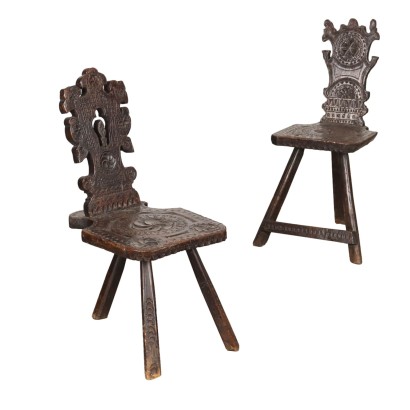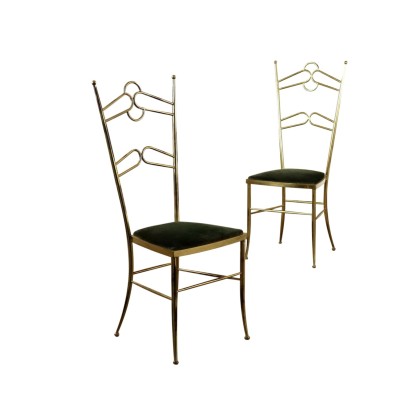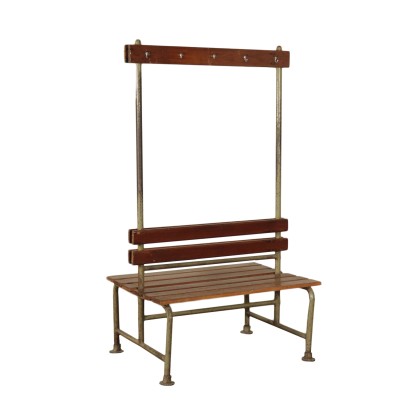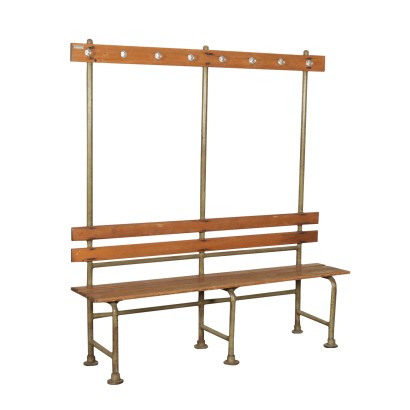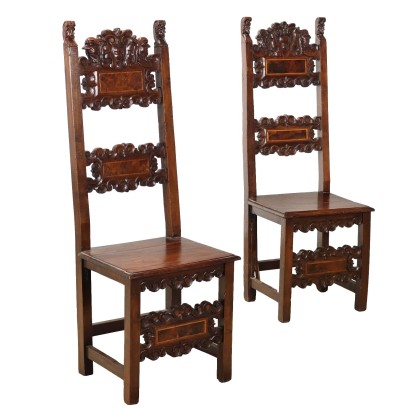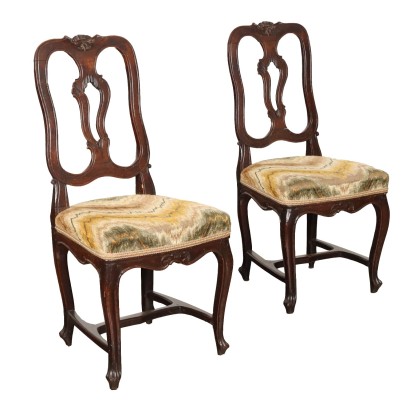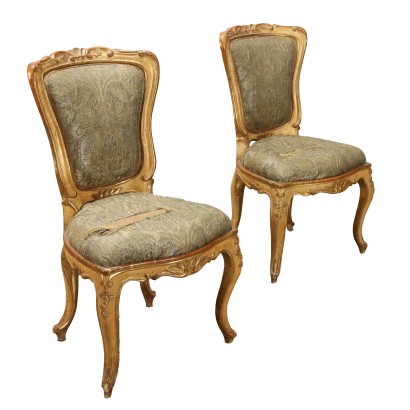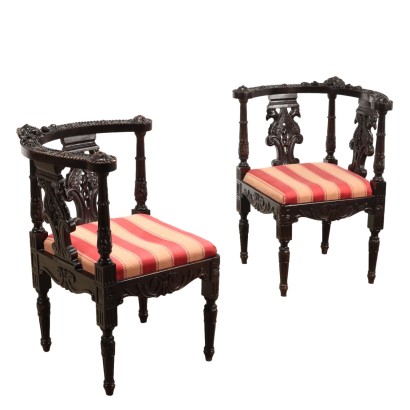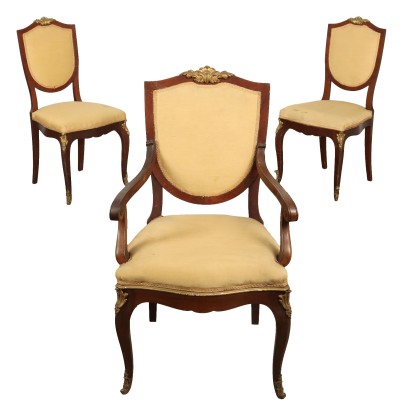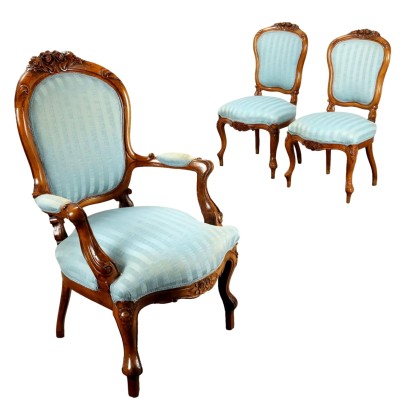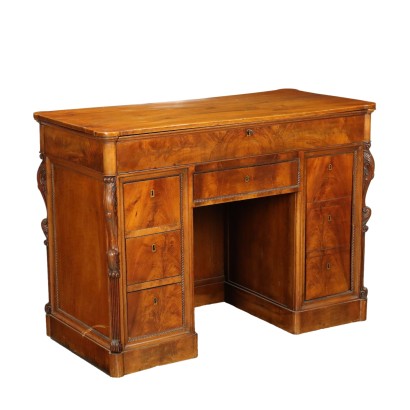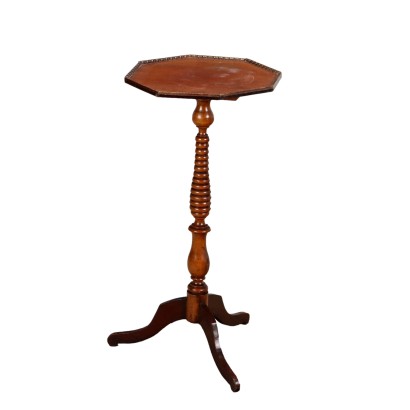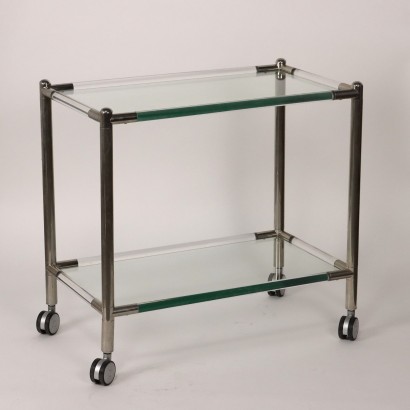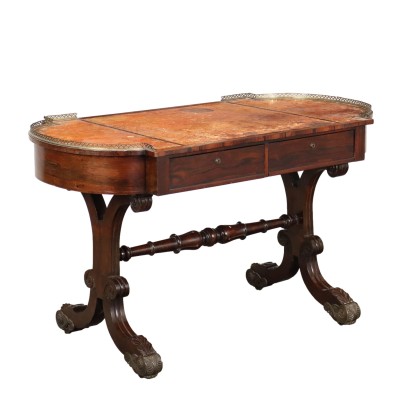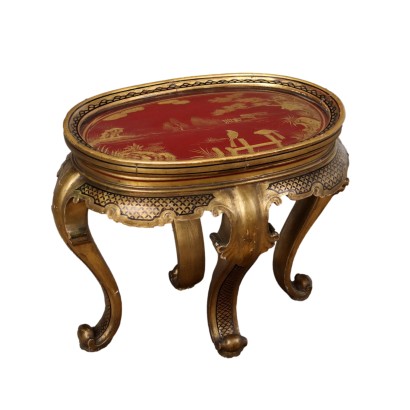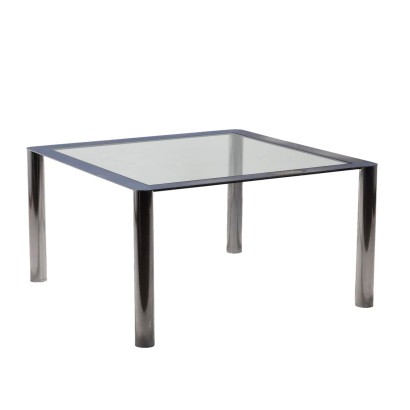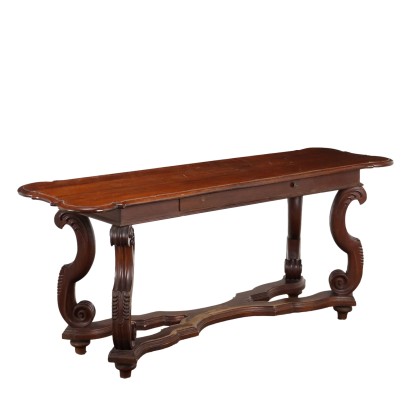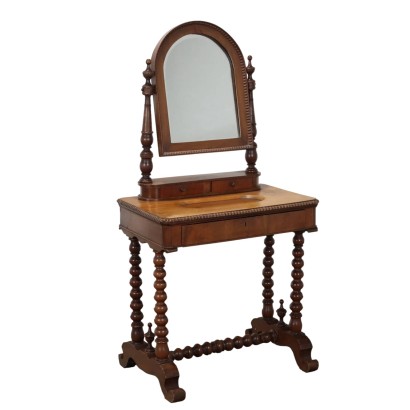Pair of Antique Renaissance Stools Walnut Italy XVI Century - Italy, XVI Century
Features
Italy, XVI Century
Style: Renaissance (1460-1630)
Age: 16th Century / 1501 - 1600
Origin: Italy
Description
Two Renaissance stools in walnut wood, supported by four legs, both the seat and the shaped backrest are richly decorated with geometric carvings.
Product Condition:
Product which due to age and wear requires restoration and re-polishing. We try to present the real state of the furniture as completely as possible with photos. If some details are not clear from the photos, what is stated in the description applies.
Dimensions (cm):
Height: 90,5
Width: 49
Depth: 51
Seat height: 48
Restoration options
Complete restoration
Trattamento antitarlo, ripresa della lucidatura, finitura a gommalacca, stuccature, spagliettatura e inceratura, 350 euroAdditional Information
Style: Renaissance (1460-1630)
During the Renaissance, furniture took on architectural forms, perfect proportions, and was adorned with rationally arranged decorations, taken from Greco-Roman iconography.Supports and feet carved in the shape of an acanthus leaf or a lion's paw appeared at least from the early 1460s.
Alongside parallelepiped chests, others appeared in the shape of a classical sarcophagus, with surfaces marked by ornamental metrics rigidly disciplined within pilasters and frames.
The novelty of the sculptural carving decoration derived from archaeological remains triumphs, decoded and reworked stylistic elements in different compositional harmonies arranged in alternating games of dentils, ovules, volutes, acanthus-shaped spirals, loricature, strigliature, grotesque candelabras, and the entire pantheon of pagan mythology comes to life again, in particular to decorate chests, which from their initial function as containers for the wedding dowry take over the new instance of real parade furniture.
It is worth remembering that the displayed furniture was generally richly embellished with gold leaf gilding.
In the first decades of the sixteenth century the use of Certosina inlay definitively faded away, although even in the Renaissance this technique had great fame, just think of the activity of the Tasso workshop in Florence.
Learn more about the Renaissance style with our insights:
The Renaissance style
A pair of candle holders between the Renaissance and Baroque
FineArt: The Renaissance
FineArt: Renaissance Cassina gilded, Belloni family – Venice, 16th century
The dictionary of antiques - Savonarola
INSERT ADDITIONAL LINKS
The Austrian taste of Baroque
The history of furniture in the Renaissance
Age: 16th Century / 1501 - 1600
16th Century / 1501 - 1600Other customers have searched:
Sedie, sedia antica, sedia ufficio, sgabello..
Per scoprire tutto su sedie antiche e di design, consulta il nostro blog e le presentazioni su FineArt:
Coppia di sgabelli, Roma XVII secolo
Coppia sedie barocchetto, Venezia
Sedie anni '50, Manifattura Italiana
Due sedie 'Ninfea' Gio Ponti da collezione
Due sedie 'Ninfea', Gio Ponti per F.lli Reguitti
Sull'antiquariato in generale dai un'occhiata anche a:
Classic Monday: da un pezzo dei nostri magazzini alla storia dell'antiquariato
L'antiquariato dalla A alla Z: il Dizionario dell'Antiquariato
Il dizionario dell'antiquariato - Lastronatura
Il dizionario dell'antiquariato - Mascherone
Il dizionario dell'antiquariato - Natura morta
Il dizionario dell'antiquariato - Opificio
Il dizionario dell'antiquariato - Pastiglia
Il dizionario dell'antiquariato - Savonarola
Il dizionario dell'antiquariato - Rosone
Per scoprire tutto su sedie antiche e di design, consulta il nostro blog e le presentazioni su FineArt:
Leggi di più
Breve storia della sedia, dall'Antico Egitto alla produzione in serieCoppia di sgabelli, Roma XVII secolo
Coppia sedie barocchetto, Venezia
Sedie anni '50, Manifattura Italiana
Due sedie 'Ninfea' Gio Ponti da collezione
Due sedie 'Ninfea', Gio Ponti per F.lli Reguitti
Sull'antiquariato in generale dai un'occhiata anche a:
Classic Monday: da un pezzo dei nostri magazzini alla storia dell'antiquariato
L'antiquariato dalla A alla Z: il Dizionario dell'Antiquariato
Il dizionario dell'antiquariato - Lastronatura
Il dizionario dell'antiquariato - Mascherone
Il dizionario dell'antiquariato - Natura morta
Il dizionario dell'antiquariato - Opificio
Il dizionario dell'antiquariato - Pastiglia
Il dizionario dell'antiquariato - Savonarola
Il dizionario dell'antiquariato - Rosone
Alternative proposals
It could also interest you

